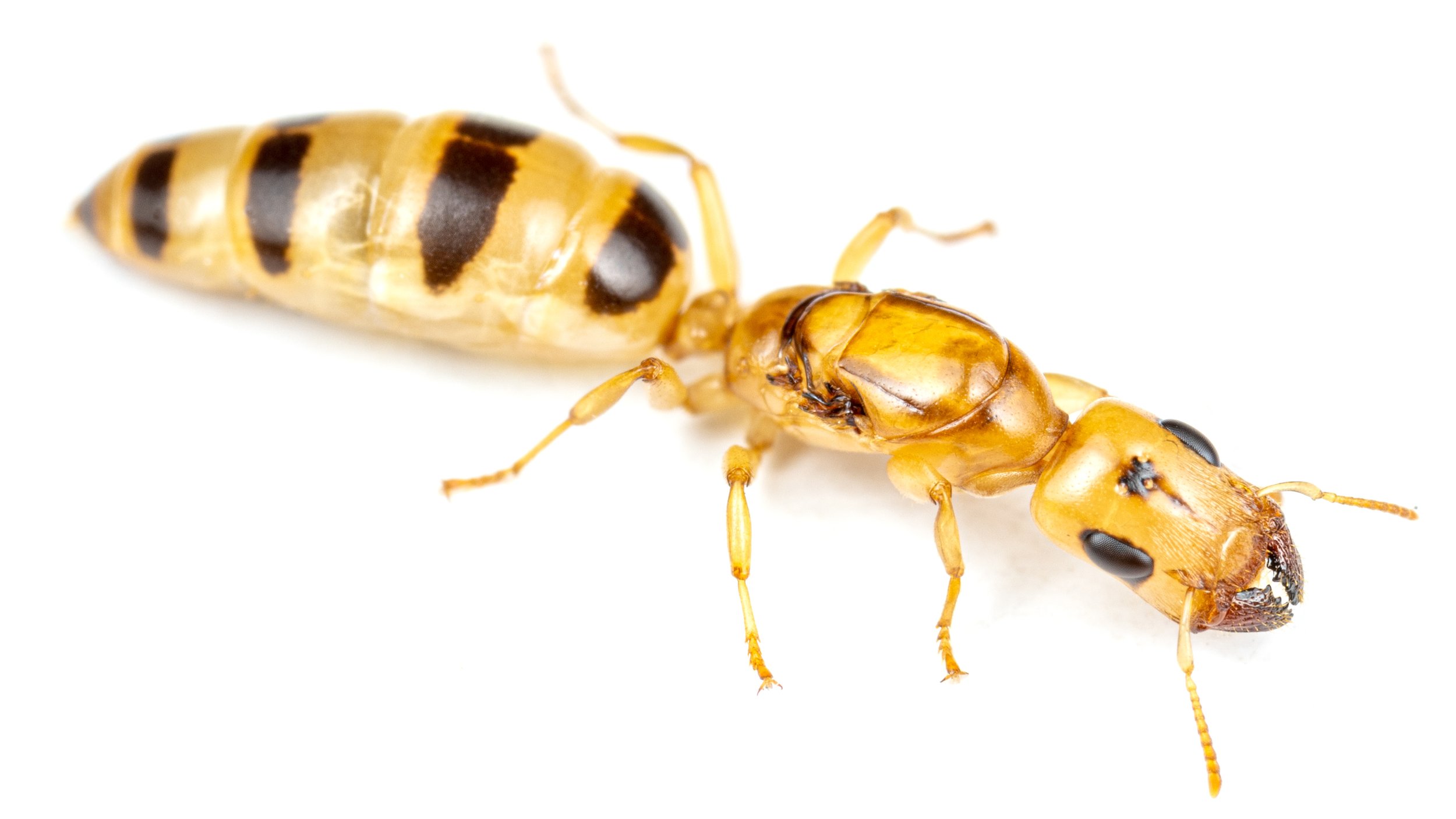Myrmoteras, the Monstrous Ants Ecology and Care Guide
Species of the genus Myrmoteras are among the most bizarre ant forms and unique among Formicinae by having mandibles that form into a specialized trap-jaw mechanism that can open more than 280 degrees. – a character that, however, has convergently evolved in other subfamilies (Odontomachus and Anochetus in Ponerinae; Dacetini in Myrmicinae). The small Myrmoteras ants with cryptic living habits in leaf litter make them difficult to collect.
The genus Myrmoteras was established by Forel in 1893 from a series of workers taken in the Thaungyin Valley, Burmah. This ant, to which he gave the name binghami (genus genotype), was for a number of years the only known representative of the genus.
The genus Myrmoteras, which comprises circa 41 species, is endemic to the Asian tropics.
Gesomyrmex, the Amber Javelin Ants Ecology Guide
Gesomyrmex is a genus of ants in the subfamily Formicinae. The genus contains seven extant species, and eleven fossil species, about which little is known, since the few species within the genus are rarely encountered. The genus was established by G. Mayr (1868) for a single species from Baltic amber.
Members of this genus are very rare and ancient forms as they belong to a loose assemblage of genera which have been considered the most primitive members of the subfamily Formicinae.
These genera, which include Myrmoteras, Gesomyrmex, Gigantiops, Myrmecorhynchus, Opisthopsis and Santschiella, remain among the least studied ants.
Oecophylla smaragdina, Asian Weaver Ants. Ecology and Care Guide
Oecophylla derived from Latin words, oeco (meaning house or household) and phylla (plural for phyllum which means having leaves or leaflike parts) and smaragdina, also derived from Latin, meaning emerald.
And so, Oecophylla smaragdina, the emerald leafhouse ant.
Oecophylla species are among the most iconic tropical ants presenting the most sophisticated nest-building activities of all weaver ants. Workers draw leaves together, often forming long chains, and glue them together with larval silk.
And this was what Fabricius saw, emerald leafhouse ants.
Ooceraea biroi - Clonal Raider Ants - Care Guide and Ecology
Ooceraea Biroi previously known as Cerapachys Biroi, from the Greek keras [κέρας], meaning horn and pachys [παχυς] meaning thick, the "thick-horn" ant.
Referring to the thick antennae of ants in this genus, possibly an adaptation against being severed when attacked by other ants. Biroi comes from Lajos Biró, the Hungarian naturalist who collected the type specimens.
Their common name is the clonal raider ants.
Odontoponera - Care Guide and Ecology
Odontoponera is one of the most widespread ponerine species, it's your typical Asian Ponerine.
Ponerine ants are one of the most fascinating subfamilies of ants you can keep, for they combine simple social organization with a high diversity of morphological, ecological and behavioral traits.
Harpegnathos Jumping Ants - Care Guide and Ecology
Harpegnathos, from the Greek word harpe, which refers to a curved weapon such as a sickle, and gnathos which refers to jaw. Hence the sickle jaw or curve blade jaw ant. But we normally call them Jumping Ants.
Jumping Ants belongs to the Ponerinae subfamily, which is notable for being different from other subfamilies of ants because they are considered to be more primitive, meaning they have more common characteristics with their wasp ancestors. They are also known for combining simple social organization with a high diversity of morphological and behavioral trait
Camponotus nicobarensis - Care Guide and Ecology
This is a Macau local species which is a very sought after species, especially as one of the first exotic Carpenter Ant species to have. Let’s learn more about them!






